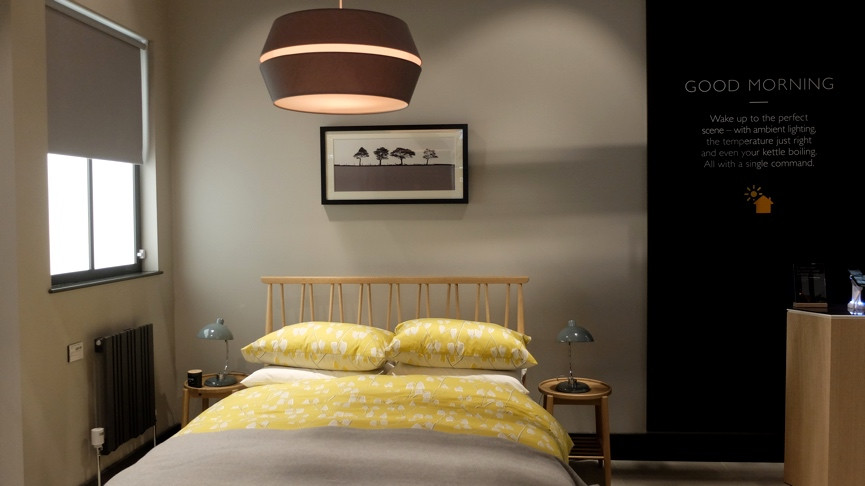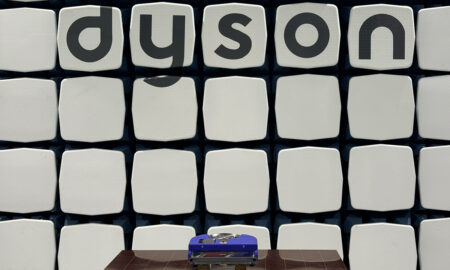We peek into Apple and John Lewis' HomeKit showcase
I don’t know what I was expecting. When I saw the news that Apple and John Lewis had built a kind of model smart home in its swanky new £33 million department store at uber-shopping centre Westfield London, I was expecting big things. You’ve seen an Apple Store, right? They’re impressive. I’m impressed by them.
What I got was a smaller than you might think set up of a fake living room, fake bedroom and I guess, a front door? All Apple HomeKit and Siri-powered via the HomePod and Apple TV 4K with a decent number of third party brands on show like Philips Hue, Logitech and Netatmo with some surprises too like a Lightwave smart dimmer switch and Stadler Form Q fan. (What John Lewis stocks is obviously a big factor here).
After the futuristic, zippy booths of Samsung and LG at the tech trade show MWC, this seemed downright basic, mundane… ordinary. It’s nice and homely and nothing looks flashy or out of place – aside from maybe the wall of Hue smart lights.
And that is, of course, the point.
Apple doesn’t need to impress people like me who’ve seen it all and can already list ten things wrong with its Apple HomePod smart speaker. This model home is designed for casual shoppers (with disposable income) who find themselves in the Technology department on the third floor. They can try out the voice controls with the music and the lights and nosy around the Apple Home app. According to a spokesperson who spoke to House Beautiful earlier this week, 77% of searches to John Lewis’ website are from iOS devices. Where’s the Alexa smart home? Or Google’s experiential area? Nowhere to be found because, well, they know their customers.

The Apple smart home is – at face value – less fully featured, more limited in compatible devices and more expensive than the equivalent from rivals Amazon and Google. In the John Lewis set up, there’s a Logitech Circle 2 smart security camera (and an iPad to show how you can view the feeds) and a Netatmo thermostat plus radiator valves – not, you could note, the market leading Nest products that will increasingly become tied into Google’s Assistant ecosystem.
If I were a part of a guerilla marketing team (unlikely), I’d stick post-it notes all over the Apple model smart home, starting with one saying ‘no voice controls for Spotify’ on the sofa-side HomePod.
So, a work in progress. And you could argue that Alexa has already kickstarted the move of the smart home to the mainstream. Nest thermostats and Ring video doorbells (now owned by Amazon in a huge $1 billion deal) have also done a neat job of cutting through to regular people.

But there’s also a part of me that thinks Cupertino is once again moving just slowly but surely enough to be right on time with the general tech buying public. By the time, big numbers of my ‘normal’ friends were asking me which smartwatch to get, the Apple Watch was the best bet. And the actual question was ‘which Apple Watch should I get?’
And the Apple Home does have its benefits – one of the things highlighted in the John Lewis area is automation – “have the garage door open as you pull into your drive” etc – and Google is only just now rolling out its Routines. Potato potato.
While Amazon is flogging super cheap Echo speakers on its own online store, and Google is literally giving away its Home Mini speakers in the very same London shopping centre, Apple’s not going to be able to compete. So with this John Lewis play, it’s doing what it’s always done best – making beautiful shit, tweaking features until they get it right and ignoring the nerds in favour of people who don’t care who is winning the smart home war until they actually get these devices into their home.





